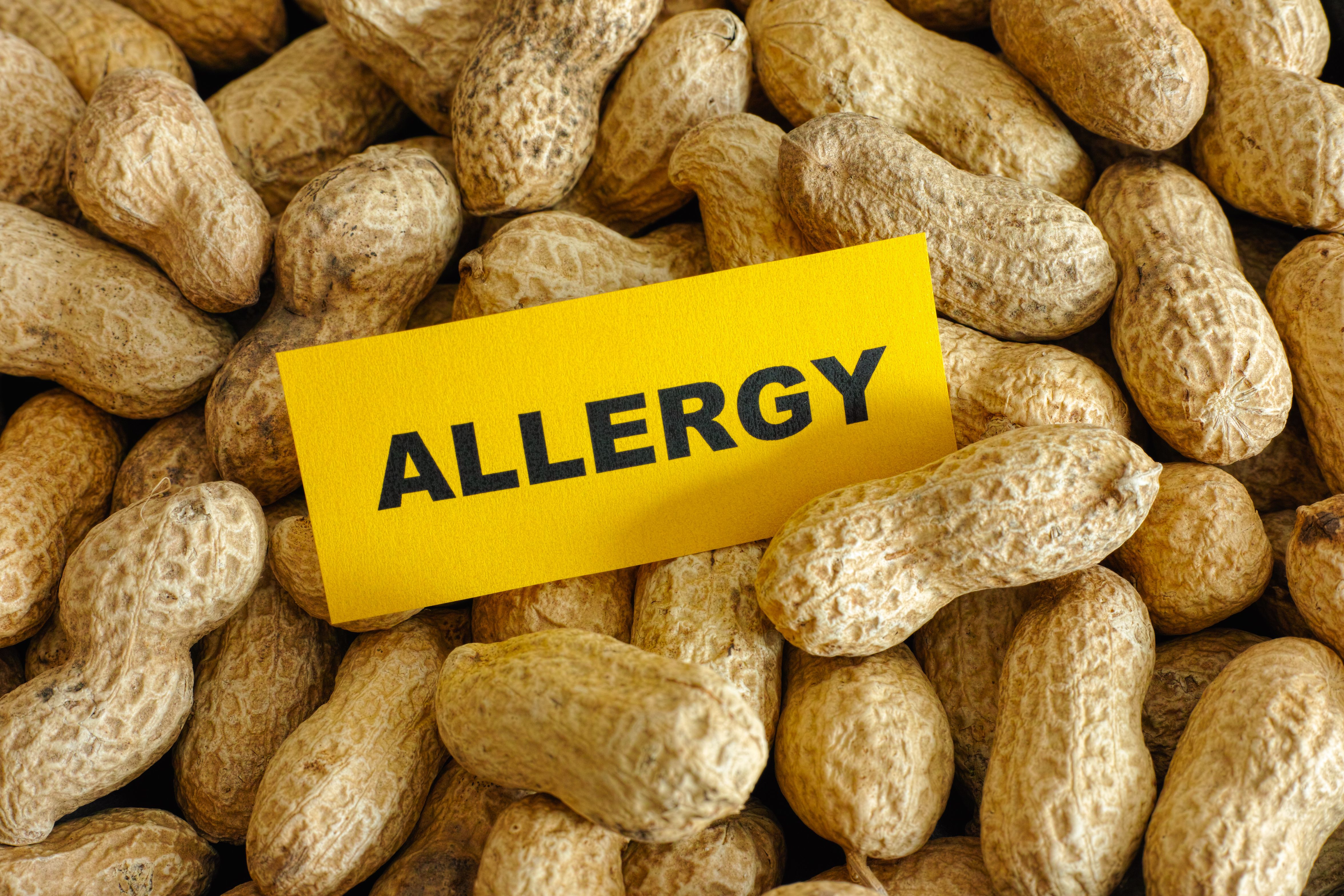Long-term safety of epicutaneous immunotherapy with DBV712 for peanut allergy
A poster presentation at AAAAI from the phase 3 PEOPLE Study revealed DBV712 treatment in children with peanut allergy has a favorable safety and tolerability profile.
Long-term safety of epicutaneous immunotherapy with DBV712 for peanut allergy | Image Credit: © Stepan Popov - © Stepan Popov - stock.adobe.com.

Long-term safety and tolerability was observed for DBV712 (Viaskin; DBV Technologies) to treat children aged 4 through 11 years with peanut allergy according to data from the phase 3 PEOPLE study extension safety period.
Data was featured during a poster presentation at the 2024 American Academy of Allergy Asthma & Immunology (AAAAI) Annual Meeting that was held in Washington, DC from February 23-26, 2024.
The poster titled "Long-Term Safety Results of Epicutaneous Immunotherapy (EPIT) With Viaskin Peanut in Peanut-Allergic Children Aged 4 Through 11 Years in the Phase 3 PEOPLE Study" (#379) detailed that DBV712 is being investigated to treat peanut allergy.
The novel approach to epicutaneous immunotherapy (EPIT) is a patch-based platform that contains 250 μg peanut protein that is administered to intact skin to induce desensitization, according to study investigators.
The PEOPLE study was an open-label trial to evaluate the long-term safety and efficacy of children who were previously enrolled in the PEPITES study that included 365 peanut-allergic children aged 4 to 11 years.
Of this group, 298 children continued in PEOPLE across 31 sites in Australia, Canada, Europe, and the United States. According to interim 3-year data from the PEOPLE study, of individuals who completed 3 years of DBV712 treatment, "51.8% vs 40.4% (difference: 11.3%; 95% CI: 2.8, 19.6) reached an eliciting dose (ED) ≥1000 mg peanut protein at Month 36 vs Month 12 double-blind, placebo-controlled food challenge (DBPCFC), respectively," the poster demonstrated.
The peanut patch was well tolerated overall, as application-site reaction frequency decreased along with severity over time. Treatment adherence over 3 years was 98.1%.
Data from Years 4 and 5 of the PEOPLE study was used as the extension safety period in the current analysis. Duration and severity of treatment-emergent adverse events (TEAEs) and serious TEAEs were safety outcomes of the extension safety period.
AEs were assessed by investigators. Skin reactions were graded by the site investigator from 0 to 4. Zero is no skin reaction and 4 is erythema and vesicles, the investigators presented.
There were 217 participants who completed PEOPLE at Year 3. Of these individuals, 87 continued in the PEOPLE extension period (n = 40 placebo + DBV712, n = 47 DBV712 + DBV712).
At the extension enrollment, the mean age was 11.1 years (range 8-16 years), and 56.3% of participants were male.
A TEAE occurred in all participants in the PEOPLE Extension Safety Population over 5 years, with the majority being local application reactions that were mild or moderate in severity.
One serious treatment-related AE occurred in Year 1, and there were no permanent study discontinuations attributed to TEAEs. In Year 1 only, 1 of 87 participants experienced a treatment-related TEAE that led to epinephrine use.
In Years 1 and 2 only, 2 of 87 patients experienced treatment-related anaphylactic reactions.
According to the presentation, approximately 93% of participants experienced a TEAE that was considered related to DBV712. Investigators noted, "Treatment-related TEAEs decreased over time: 63/87 (72.4%) in Year 1 to 9/59 (15.3%) in Year 5, as did the severity."
In the extension cohort, no participants reported treatment-related epinephrine use after Year 1 of PEOPLE, and there was no treatment-related epinephrine use in Years 4 or 5 of the study.
Overall, trends across 5 years demonstrated a decrease in the frequency and severity of TEAEs.
"The biggest takeaway from the long-term study of Viaskin for the treatment of peanut allergy is the continued data that show the high safety profile of the treatment, making it an attractive future treatment option for patients, families, and clinicians," David M. Fleischer, MD, director, Allergy and Immunology Center, Children's Hospital Colorado, and study author told Contemporary Pediatrics.
"Along with the relative ease of its use and efficacy, we hope to see this FDA approved to have as an option for treating patients with food allergy."
Fleischer and colleagues concluded, "These data suggest that long-term [DBV712] treatment in children with peanut allergy has a favorable safety and tolerability profile, resulting in high treatment compliance, which may facilitate its use over multiple years of treatment."
Reference:
Fleischer DM, Ford LS, Sussman G, et al. Long-Term Safety Results of Epicutaneous Immunotherapy (EPIT) With Viaskin Peanut in Peanut-Allergic Children Aged 4 Through 11 Years in the Phase 3 PEOPLE Study. #379. Poster. Presented at 2024 American Academy of Allergy Asthma & Immunology (AAAAI) Annual Meeting. Washington, DC. February 23-26, 2024.